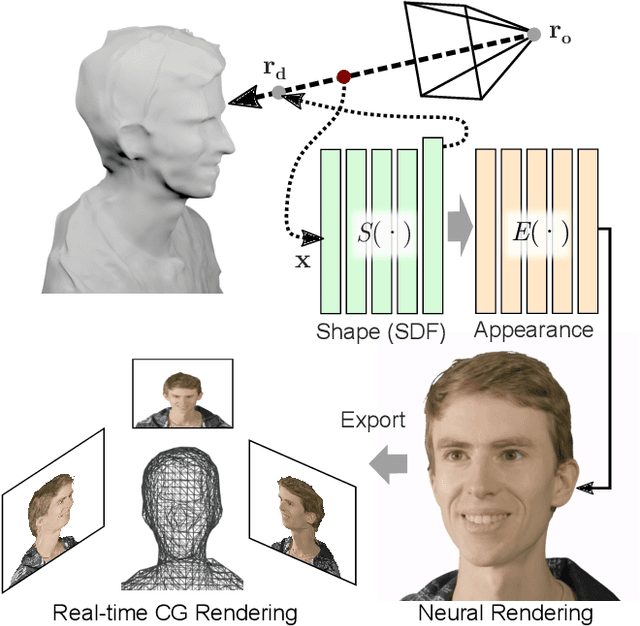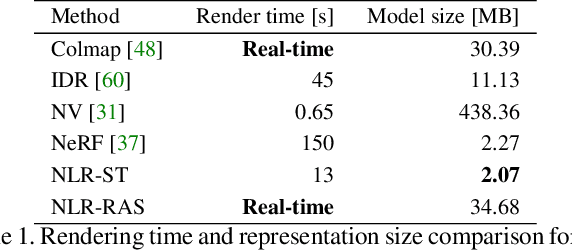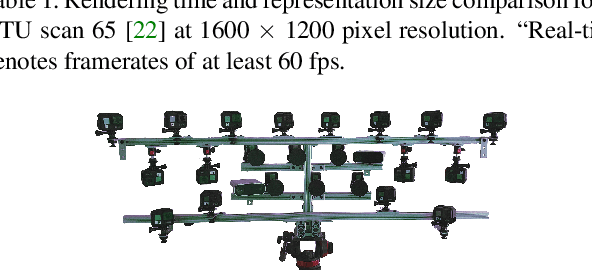Lars Jebe
DiffusionRig: Learning Personalized Priors for Facial Appearance Editing
Apr 13, 2023



Abstract:We address the problem of learning person-specific facial priors from a small number (e.g., 20) of portrait photos of the same person. This enables us to edit this specific person's facial appearance, such as expression and lighting, while preserving their identity and high-frequency facial details. Key to our approach, which we dub DiffusionRig, is a diffusion model conditioned on, or "rigged by," crude 3D face models estimated from single in-the-wild images by an off-the-shelf estimator. On a high level, DiffusionRig learns to map simplistic renderings of 3D face models to realistic photos of a given person. Specifically, DiffusionRig is trained in two stages: It first learns generic facial priors from a large-scale face dataset and then person-specific priors from a small portrait photo collection of the person of interest. By learning the CGI-to-photo mapping with such personalized priors, DiffusionRig can "rig" the lighting, facial expression, head pose, etc. of a portrait photo, conditioned only on coarse 3D models while preserving this person's identity and other high-frequency characteristics. Qualitative and quantitative experiments show that DiffusionRig outperforms existing approaches in both identity preservation and photorealism. Please see the project website: https://diffusionrig.github.io for the supplemental material, video, code, and data.
Neural Lumigraph Rendering
Mar 22, 2021



Abstract:Novel view synthesis is a challenging and ill-posed inverse rendering problem. Neural rendering techniques have recently achieved photorealistic image quality for this task. State-of-the-art (SOTA) neural volume rendering approaches, however, are slow to train and require minutes of inference (i.e., rendering) time for high image resolutions. We adopt high-capacity neural scene representations with periodic activations for jointly optimizing an implicit surface and a radiance field of a scene supervised exclusively with posed 2D images. Our neural rendering pipeline accelerates SOTA neural volume rendering by about two orders of magnitude and our implicit surface representation is unique in allowing us to export a mesh with view-dependent texture information. Thus, like other implicit surface representations, ours is compatible with traditional graphics pipelines, enabling real-time rendering rates, while achieving unprecedented image quality compared to other surface methods. We assess the quality of our approach using existing datasets as well as high-quality 3D face data captured with a custom multi-camera rig.
 Add to Chrome
Add to Chrome Add to Firefox
Add to Firefox Add to Edge
Add to Edge